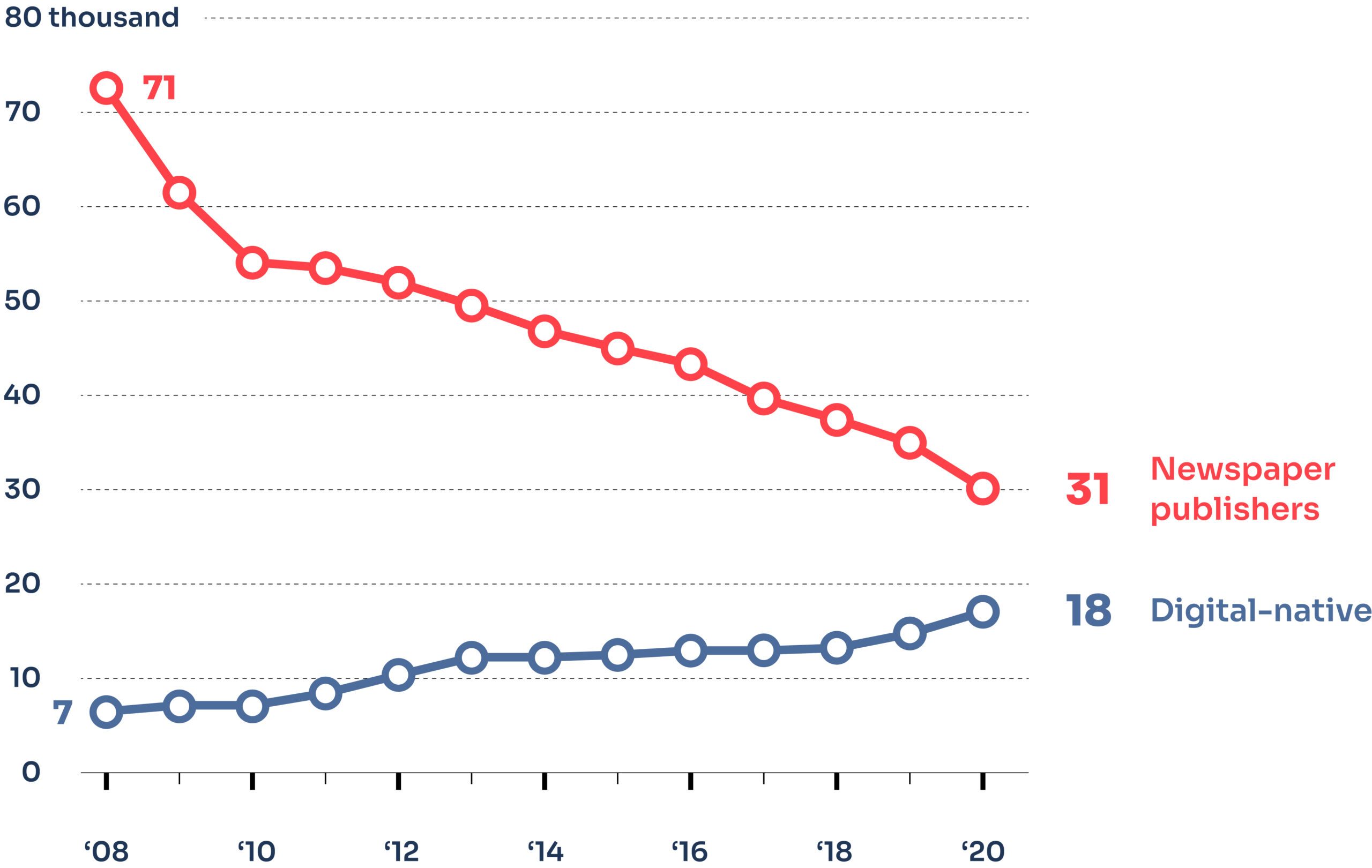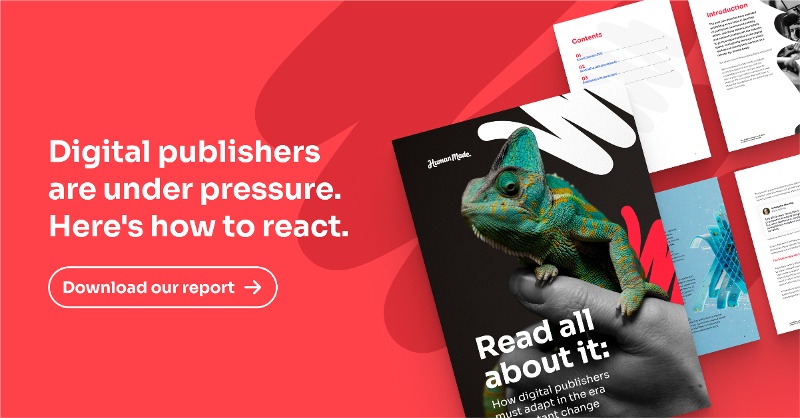With squeezed budgets, shrinking workforces and fierce competition from social media content creators, publishers are having to run faster to stand still. How can they contend with these pressures while still meeting the demands of their readership?
The publishing industry has been getting smaller since the late 2000s, with fewer people being asked to do more work. In the United States, for example, newsrooms have seen a 57% drop in employment between 2008 and 2020. Some jobs moved to digital publishing, but overall, there were fewer workers, which indicates a loss of talent in the industry.
Newsroom employment at U.S. newspapers has plummeted since 2008 but grown at digital publishers
Number of U.S. newsroom employees by news industry, in thousands

Source: Pew Research Center analysis of Bureau of Labor Statistics Occupational Employment and Wage Statistics data
Today, publishers are facing even more challenges because of the economic situation. The energy crisis and inflation have led to reduced advertising spending, budget freezes, and a focus on increasing productivity with existing resources. This means that publishers need to find new ways to make their businesses work.
A survey of CEOs, editors, and digital leaders in the publishing industry conducted by Reuters and the University of Oxford found that less than half (44%) were confident about their business prospects in 2023. While readership revenues remain stable for most, growth in key advertising and commercial sponsorships has stalled. The pressures of omnichannel distribution are also affecting some publishers, who are spread thinly across platforms that are experiencing their own turbulence.
Stability through optimisation
Despite these pressures, there is hope for those who use this period of instability to revitalise and reimagine their resources. Digital capabilities will be important for those looking for a more secure future, with 68% of surveyed media leaders expecting growth from paid content in 2023. Publishers like The Times in the UK and The New York Times in the US have increased their focus on digital subscriptions, successfully growing their audiences in significant numbers.
As well as a push for new subscribers, publishers also need to remain focused on keeping their existing ones, particularly since consumers are now more likely to be cancelling subscriptions than signing up for new ones amidst the cost of living crisis: a recent YouGov survey found that, globally, subscriptions are being cancelled nearly twice as fast as new ones are being taken out. It’s therefore in publishers’ interest to keep subscribers engaged by improving the user experience, user interface, and content analytics.

As pressure mounts, publishers need to find ways to maintain momentum. Automating manual tasks and working with optimised tooling, such as advanced editorial workflows, can reduce risks of poor morale, burnout, and absences within publishing teams. This will free up staff to focus on tasks where they can add the most value, leading to higher job satisfaction and a reduced attrition rate.
Allowing younger workers to make real change can also be beneficial for publishers. Fulfilled employees are less likely to leave, which reduces the need for costly recruitment programmes. The resulting innovation will ensure that publishers keep up with consumers’ ever-higher expectations.

